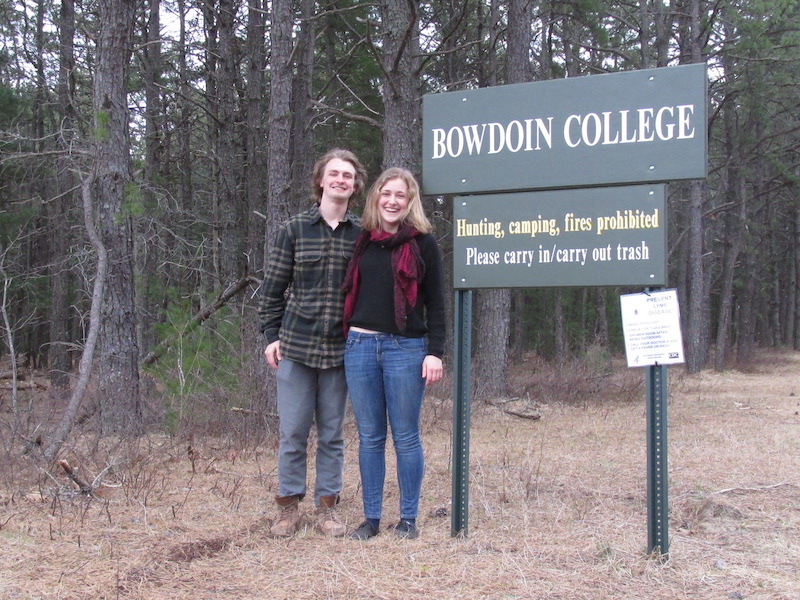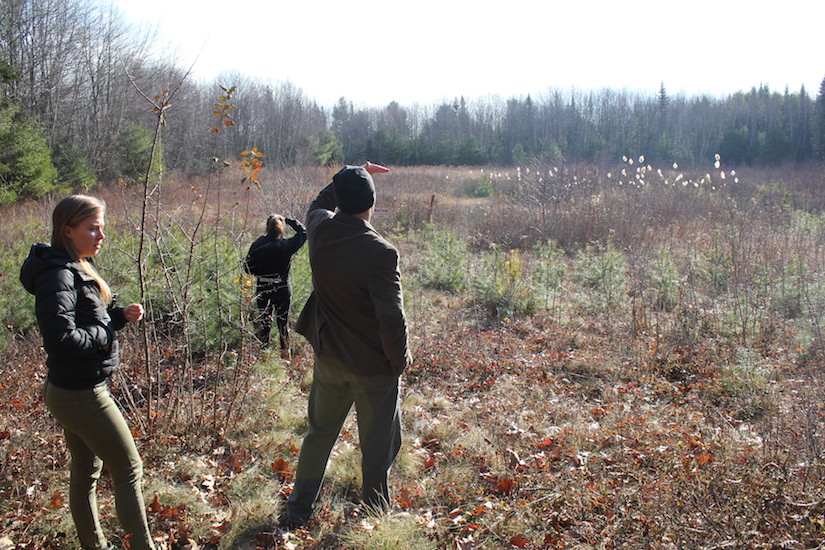Students Dream Up New Uses for Old Navy Base
By Rebecca Goldfine
While Bowdoin cannot commit right now to taking action on the land, the administration says it appreciates the work the two students are doing, according to Catherine Ferdinand, who is Bowdoin’s Government Relations and Land Use Specialist. “The College benefits from the energy and fresh perspective the students bring to this project, while the students get a unique opportunity to experience and learn about the real challenges of land use management,” she wrote in an email. “The Forest Ecology class did an impressive job compiling information about the property’s characteristics and potential. Katie and Andrew are refining some existing ideas about how the property could be used and exploring some new ideas.”
Though Bowdoin is still in the early stages of its own planning for the property, Morse-Gagne said she and Blunt have been encouraged by college officials and their advisors – Douhovnikoff and lab instructor Jaret Reblin – to “think big.”
But the two students, who are both environmental studies double majors, said they are mindful about keeping their proposals relatively simple, affordable, and environmentally low impact.
One idea of theirs is to install a grid of bat houses and bird houses — mainly for tree swallows and blue birds — for research and recreational bird/bat watching. Morse-Gagne added, “And maybe owl houses, too.” An abandoned munitions bunker could be turned into a bat hibernaculum, they suggested.
The two students have been scheduling meetings all semester with town and college officials to propose their ideas and suggest collaborations. For instance, they met with the Brunswick-Topsham Land Trust to talk about creating a trail system on the Bowdoin land that connects to the new Kate Furbish preserve on the southern end of the base. They’d also like the trail system to link to the Bowdoin Town Commons trail network.
They’ve met with Bowdoin Organic Garden supervisor Jeremy Tardif to see about the possibility of creating more gardens on the land, as well as fruit orchards.

They’ve talked to biology faculty about setting up experimental forest plots and field monitoring gauges to collect weather data or stream data.
They’re also suggesting that perhaps the college should remove the chain link fencing around much of the property, eradicate invasive plants that are threatening native plants, build an orienteering course and an archery range, and form a management committee for the future use of and care for the land.
The land is beautiful and ecologically interesting, and right now under-used, Morse-Gagne and Blunt said. When they first stepped foot on the property last fall, they were amazed. “We own this!” Douhovnikoff told his students after opening the locked gates. “People were like, what!?” Blunt recalled.
“We want to put the property more on the radar of campus than it is now,” Morse-Gagne said. “It’s a really cool piece of land. I’ve been excited to wander around it. We’ve had some good exploring days.”



